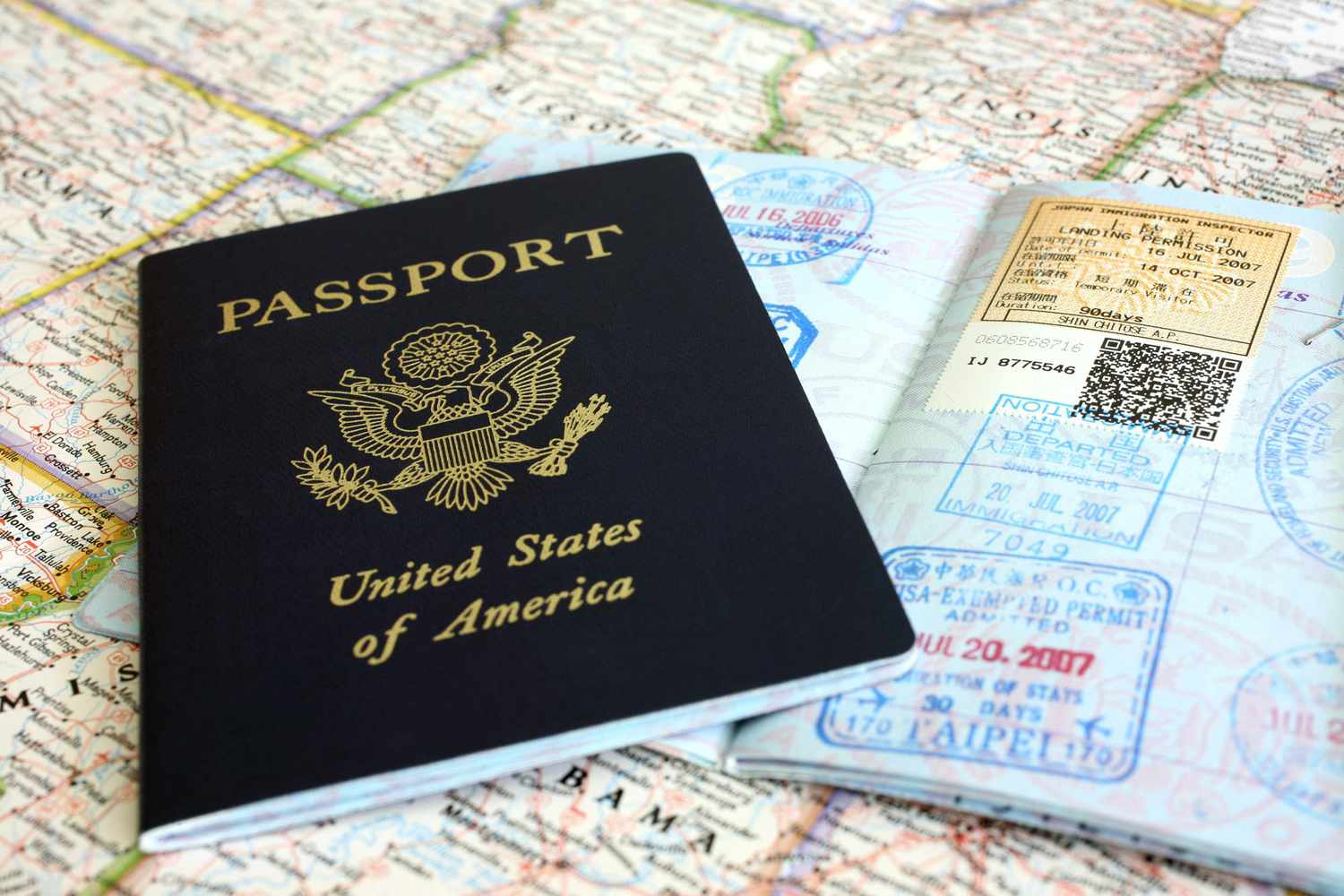Getting a passport is one of the first steps for jetsetters planning international adventures?
But after filling out all that paperwork and waiting weeks for processing, you may be wondering – does my passport actually have my home address printed in it?
Or is it better left off for privacy and security reasons?
If you’re short on time, here’s the quick answer: No, U.S. passports do not list your residential address. Only your name, nationality, date of birth, sex, and place of birth are included.
What Information is Printed in a Passport
A passport is an essential travel document that serves as proof of a person’s identity and citizenship.
It contains several pieces of information that are crucial for international travel and identification purposes.
Here are the key details that are typically printed on a passport:
1. Full name
Your full name, including your given name(s) and surname, is printed on your passport.
This ensures that your identity is accurately represented and recognized internationally.
2. Nationality
Your passport will clearly state your nationality, indicating the country to which you belong.
This information is necessary for immigration and border control officials to determine your legal status.
3. Date and place of birth
Your date and place of birth are also included in your passport.
This information is crucial for establishing your identity and verifying your age.
4. Sex
Your gender is typically indicated in your passport, using either the terms ‘male’ or ‘female.’
This allows for accurate identification and differentiation between individuals.
5. Passport number
Each passport is assigned a unique passport number, which is printed on the document.
This number is used for identification and tracking purposes by immigration authorities.
6. Photo
A passport includes a photograph of the passport holder.
The photo serves as visual identification and helps border control officials verify the traveler’s identity.
7. Signature
Most passports require the holder’s signature, which is typically placed on a designated page.
This serves as a way to authenticate the document and confirm the owner’s consent.
Why Your Address is Not Included
When it comes to passports, you might have noticed that your home address is not included in the printed information. This deliberate omission is done for several reasons, which we will explore in this article.
Privacy and security reasons
One of the main reasons why your address is not printed on your passport is to protect your privacy and enhance security measures.
Including personal information like your home address on a widely recognized travel document could potentially expose you to various risks.
Criminals could misuse this information for identity theft, stalking, or even burglary.
By keeping your address off the passport, authorities aim to safeguard your personal safety and reduce potential risks.
Passport valid anywhere; address not needed
Another reason why your address is not included in your passport is that the document’s primary purpose is to establish your identity and nationality, rather than your place of residence.
A passport serves as a universally recognized proof of identity, allowing you to travel internationally and cross borders.
Since the primary focus is on your identity, including your address becomes unnecessary. Your passport remains valid regardless of where you are living, making your address irrelevant in this context.
Contact info provided separately if needed
If there is a need for authorities or officials to contact you during your travels, they can obtain your contact information separately.
For instance, airlines and immigration authorities have access to passenger manifests and can easily retrieve your contact details from their databases.
Moreover, when you apply for a visa to a specific country, you may be required to provide a local address where you will be staying.
This information can be collected separately and doesn’t need to be printed on the passport itself.
It’s essential to remember that the omission of your address on your passport is a deliberate measure aimed at protecting your privacy and enhancing security.
By keeping your personal information separate from the travel document, authorities can ensure that your identity is secure, and your travels remain smooth and worry-free.

When Your Address is Required
When applying for a passport, there are certain instances where your home address is required.
This information is necessary for various reasons, including identification purposes, ensuring the safe delivery of your passport, and providing a means of contact in case of any issues that may arise.
Let’s take a closer look at the different scenarios where your address is needed.
On passport application forms
When filling out a passport application form, you will be asked to provide your home address.
This is a standard requirement as it helps to establish your identity and ensure that the passport is issued to the correct person.
The address you provide will be printed on the passport, along with other personal details such as your full name and date of birth.
Did you know? The address printed on your passport is not visible to others when you present your passport for identification purposes. It is only used for internal verification and record-keeping.
To receive passport through mail
Once your passport application has been processed and approved, your passport will be mailed to you at the address you provided.
This is to ensure that your passport reaches you safely and securely.
It is important to provide an accurate and up-to-date address to avoid any delays or complications in receiving your passport.
Pro tip: If you have recently moved or plan to move in the near future, it is essential to update your address with the appropriate authorities to ensure that your passport is delivered to the correct location.
If contacting passport agency for issues
In the event that you need to contact the passport agency for any issues or inquiries, having your address on file can be beneficial.
It allows the agency to locate your application and provide you with the necessary assistance.
Additionally, if you need to request a change of address or update any other personal information, having your current address readily available will make the process smoother and more efficient.
Alternatives to Verify Your Address
Bring utility bills, bank statements when traveling
While a passport does not typically include your home address, there are alternative ways to verify your address when you are traveling. One option is to bring utility bills or bank statements that clearly show your address.
These documents can serve as proof of residency and can help establish your identity when needed.
Use driver’s license or national ID card
Another alternative is to use your driver’s license or national ID card. These identification documents often include your home address, making them a reliable source to verify your address.
However, it’s important to note that when traveling internationally, a passport is still required in most cases.
Additional documents may be required
In some situations, additional documents may be required to verify your address.
This can vary depending on the specific requirements of the country you are visiting or the organization you are dealing with.
For example, if you are applying for a visa, you may need to provide proof of address in the form of a utility bill or a rental agreement.
It’s always a good idea to check the specific requirements beforehand and ensure you have the necessary documents with you.
The Bottom Line
Passports do not typically have a person’s home address printed on them.
The primary purpose of a passport is to serve as a travel document, confirming the identity and nationality of the holder, rather than providing personal contact information.
However, passports do contain other important information, such as the holder’s full name, date of birth, passport number, and a photograph.
What is Printed on a Passport?
A passport contains several key details that are necessary for international travel. These include:
- Full Name: The passport will have the holder’s full name, including first, middle, and last names, as provided during the application process.
- Date of Birth: The passport will display the holder’s date of birth, which is essential for identification purposes.
- Passport Number: Each passport is assigned a unique identification number, which is printed on the document. This number is used for verification and tracking purposes.
- Photograph: A passport will have a photograph of the holder, which is used to confirm their identity when going through border controls.
- Nationality: The passport will indicate the holder’s nationality, serving as proof of their citizenship.
- Signature: Passports may also include a signature section, where the holder can sign their name as a further means of identification.
Why Doesn’t a Passport Include Home Address?
The reason a passport does not usually include a person’s home address is to protect their privacy and security. Including such sensitive information on a widely recognized travel document could potentially pose a risk if the passport is lost or stolen.
Additionally, since passports are often valid for several years, a person’s home address may change during that time, making it impractical to print it on the document.
Instead, individuals are advised to update their address with the relevant authorities and carry separate identification, such as a driver’s license or ID card, that includes their current address.
It’s important to note that while passports do not contain a home address, certain countries may require travelers to provide a residential address during the application process or upon arrival.
This information is typically collected for immigration and customs purposes and is not printed on the passport itself.
Conclusion
In summary, U.S. passports do not contain your residential address or contact information for privacy and security reasons. But your address is required during the application process for verification and delivery purposes.






